Bob’s been in touch with a useful ‘how to’: How to connect led strip lights to power supply.
“Hi Al,
I love your site and I can’t wait to read the latest installment each morning.
I have learned a lot from your blog so I thought that I would contribute a little with this power supply and hookup units “manifolds” as I like to call them , that I made.
Under my layout are 8 of these “manifolds” shown in the first picture.
They are daisy chained together to form an expanded hook up for my lighting.
They are hooked up to a computer power supply that I converted to light my layout.
The supply has 12volt,5volt and 3.3volt supplies perfect for supplying whatever voltage is needed to light the entire layout!
All of my lighting is Led from the buildings to the street lights and the vehicle lights.
Hope you enjoy these pictures and hints ,maybe some of your readers will learn something as I have done from this site!!
Thank you for all of your hard work to keep this site going strong!!
Bob ( From Pennsylvania)”
Now on to Martin.
He makes no bones at all about being a modeler that likes to ‘make things work’ rather than getting lost in the scenery.
I know there are many of you just like Martin too.
And that’s fine – the wonderful thing about this hobby is you can just enjoy the parts you like.
Talking of which, wait to you see how Martin gets his stock off the layout so he can clean the track. It’s all in the vid!
“Al,
First of all, thank you for hosting this site.
I have thoroughly enjoyed seeing what everyone else is doing, but have been reluctant to show mine until now.
Like many others, I had a train set in my school days, which expanded haphazardly in the loft. This had to go when the slot car racing bug bit me in the 60’s.
Now I am retired, and after a few years of negotiation with domestic management, gained agreement to take over our spare bedroom / study and evict the bed.
I have been working on & off for a couple of years on the layout, progress has been slow because I have a number of other interests but the lockdown has given me the opportunity to catch up a bit.
I have made plenty of mistakes along the way, possibly the biggest one being leaving it far too long before getting your beginners guide!
So far, I have concentrated on getting a working layout so no scenery evident yet other than a section of ballasting but I thought you may be interested in the features I have managed to incorporate so far.
I should add that I was a bit ambitious in that my 8ft by 7ft layout incorporates 30 points and 2 double slips – maybe that is why I have spent so long getting things to run smoothly.
I am one of those modellers who gets most pleasure from making things work rather than the scenic aspect of the hobby.
Hopefully, when developed further, the layout will be a representation of the East Kent area, where I grew up going to school by train and later to work.
Although intended to be set in the late 1950 – early 1960 period, I also intend to include a Colonel Stephens line, assuming it stayed open into this era.
The baseboard is constructed in sections, the largest being 4ft X 2ft, made of 9mm ply on a 3X1 frame.
The sections are located with brass dowels and held together by 8mm coach bolts, sitting on, but not fixed to a 2X2 framework located on notches in the base board frames.
This allows any section to be removed without having to dismantle the whole layout.
Since this photo, I have added 2 extra legs and replaced 2 legs with old desk pedestals.
I started by using SCARM to develop the track plan and printed it full size which proved extremely accurate and made track laying relatively easy, although I did deviate from the plan in a number of places as I went on.
I have soldered dropper wires to every piece of track, to avoid relying on rail joiners for an electrical contact, and run these to the inner edge of the baseboard where the bus circuits are contained in trunking.
The layout gives point to point operation on 2 branch lines, and a double oval for continuous running as well as a small goods yard for operational interest.
The innermost loop is electrically isolated from the rest of the layout and connected as the DCC programming track, as well as being switchable to an analogue controller to allow me to test run a DC loco.3
I have used Peco code 100 track and points throughout, all operated by servos and controlled either from a mimic panel or by DCC from the main controller.
This is accomplished using equipment from Megapoints Controllers, which has so far proved easy to use and very reliable as well as being more cost effective than using solenoid point motors and DCC modules.
As a bonus, the customer service from Megapoints is second to none.
Although I thought I had allowed enough storage tracks for all my stock, I have already found that trying to clean the track with a layout full of stock is a nightmare, so I have made up a storage solution which I think may be of interest.
This allows me to clear the track and put everything out of harm’s way without handling the stock, and double as a fiddle yard.
I have made a short video to illustrate this, which I have sent as an attachment – I hope this is OK.
Regards
Martin.”
A big thanks to Bob for sharing his ‘How to connect led strip lights to power supply’ step by step. And thanks to Martin too.
That’s all for this time, folks.
Please do keep ’em coming.
And don’t forget the Beginner’s Guide is here if you want to join in with the fun.
Best
Al
PS Latest ebay cheat sheet is here

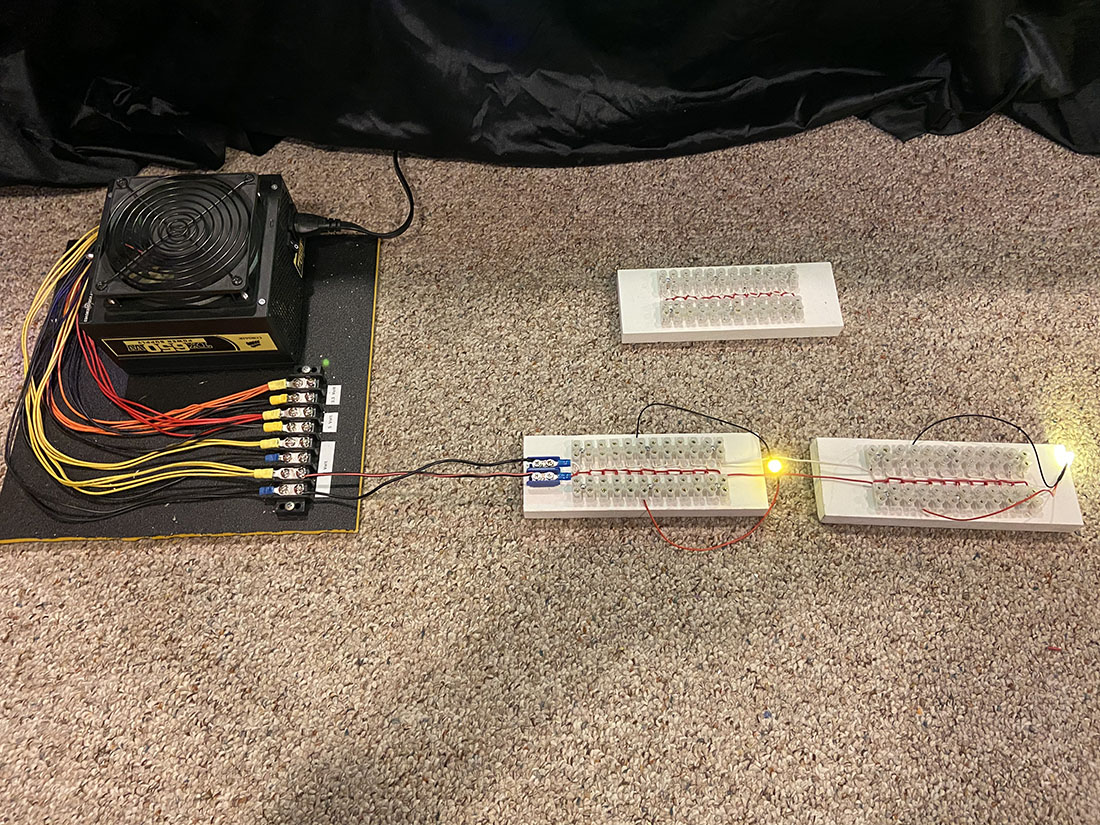
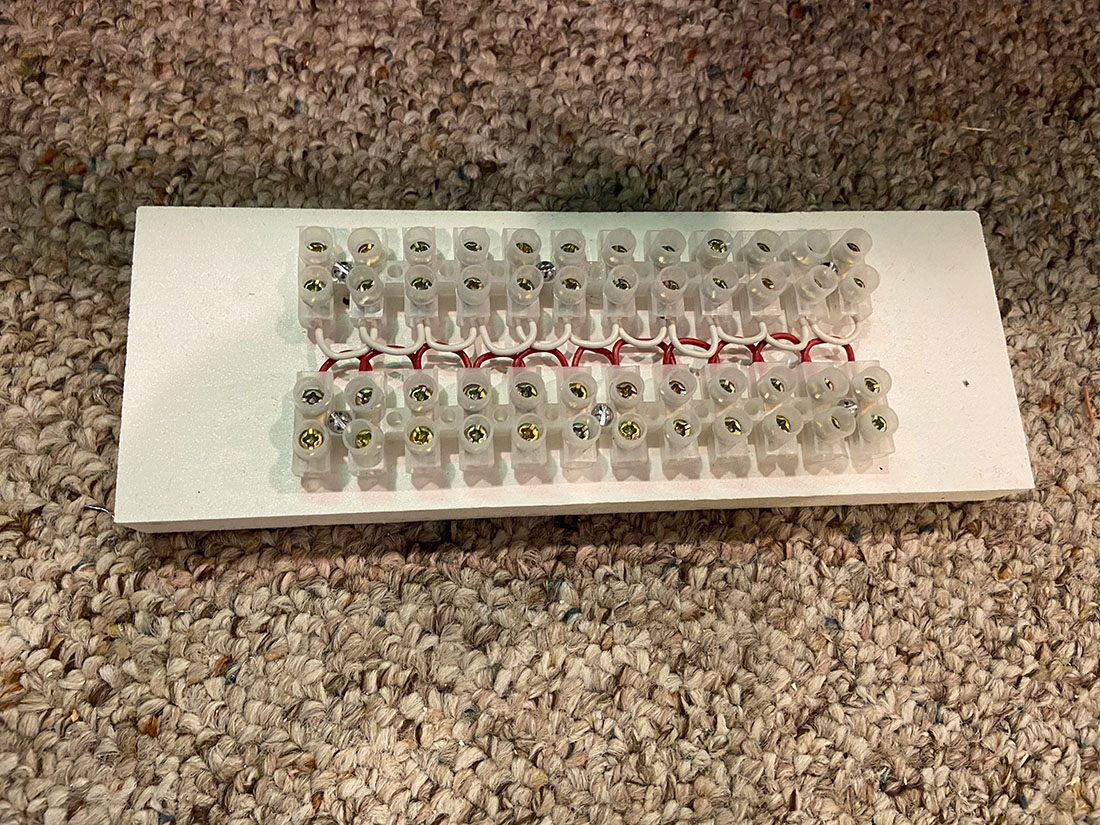
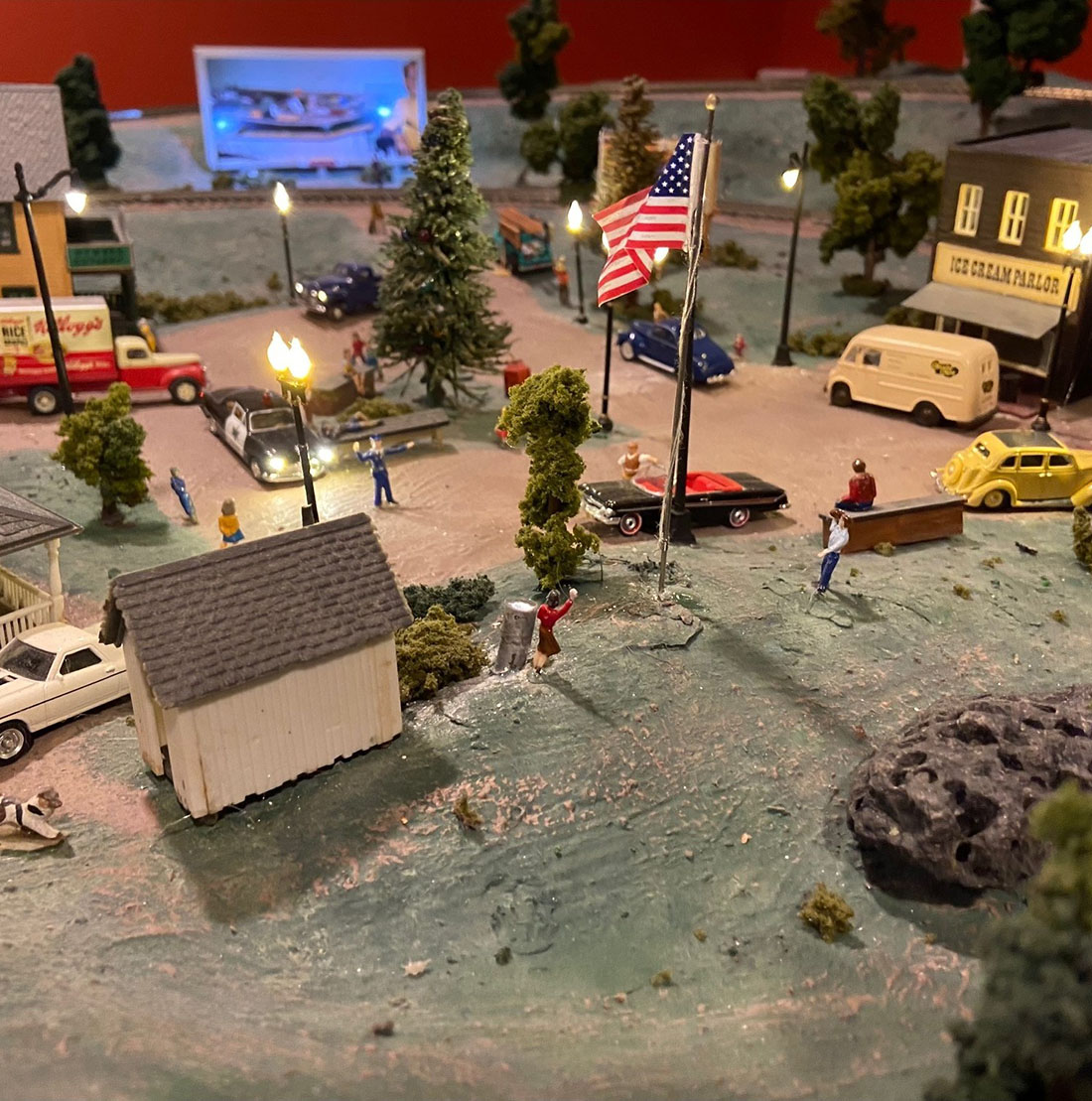
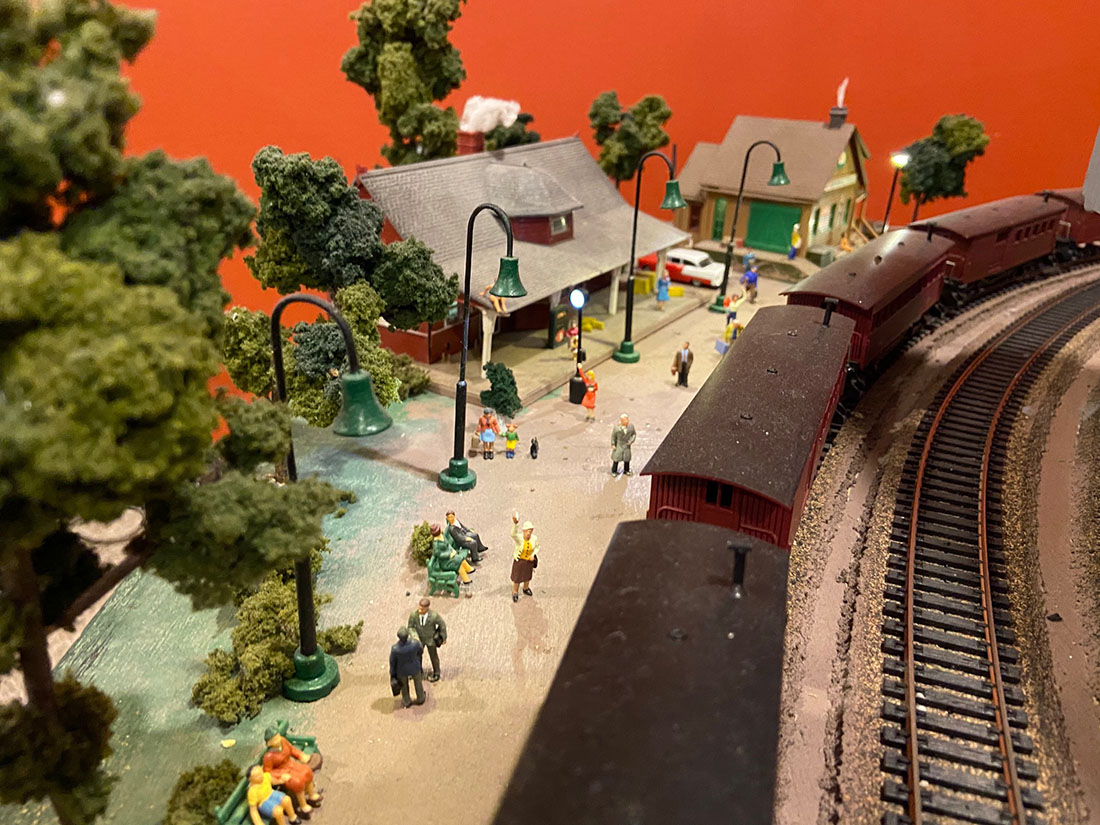
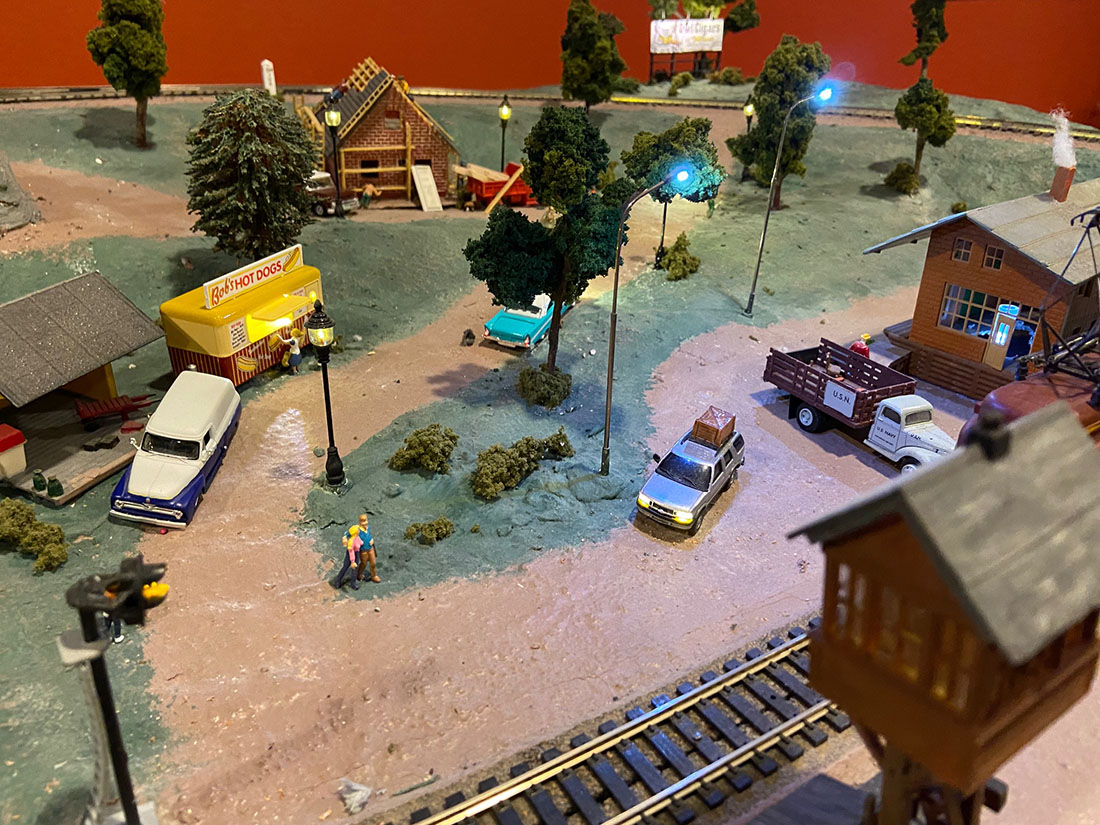
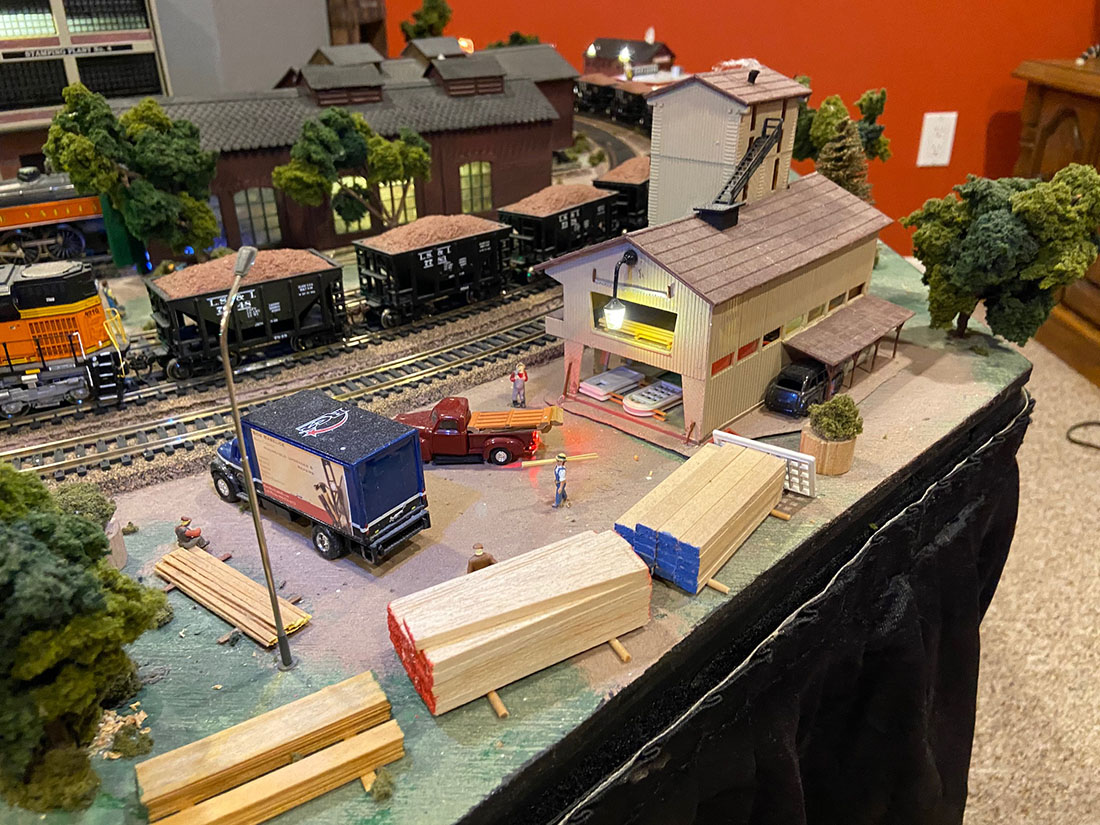
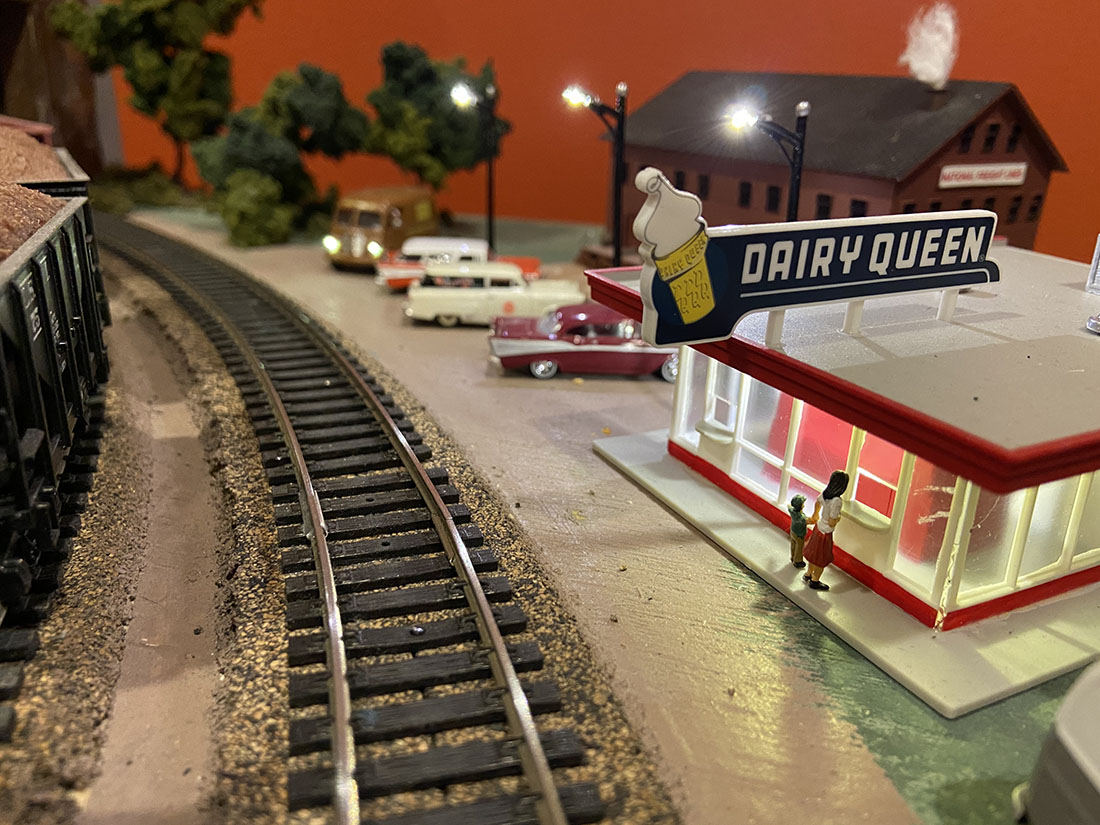



Martin, what can I say, absolutely brilliant! I love your storage solution for your trains, very ingenious and well executed. Gives us mere mortals something to aim at. Really love all aspects and looking forward to seeing more. Many thanks for your inspiration.
Peter…
Martin
Some very clever ideas. The movable fiddle yard is very clever and you appear to have though of everything to make final operation both simple and fun to use. Again clever ideas on the lifting access flap.
Your layout look pretty complex within a relatively small area. Can you send a track plan. In sure myself and many others would like to see the layout.
Wow – and I thought detailing buildings was complicated. What a delight to see things working smoothly.
Thanks for sharing some very interesting ideas there, Martin. Been considering the use of drawer runners for storage siding traversers myself but puzzling about mechanical drive, indexing, etc; good to see how someone else has gone about it. How is the turntable controlled? Movement seems a tad quick; again, something I’ve been considering but still in the VERY early stages of laying pointwork and sidings for hidden storage so loco servicing facilities are same way off. Good luck with the rest of your layout; I think it will be a masterpiece
Was there any sound with video ?If not I’ll Print your written word.
Keith Hart Western AUSTRALIA
ABSOLUTELY BRILLIANT! I think this is the most ingenius space saving model railroading work I’ve seen in recent years. and the creativity of using very commonly avilable materials to make such wonderful yet simple features and auto uncoupling, roll-off protection, and not to mention the whole traverser itself! I’ve been modeling in restricted space my entire life, and I can definitely appreciate this and take inspiration from.
One thing that I am curious about, Martin. The traverser looks like it is on a slope, yet the parked wagons don’r roll off – how did you achieve that? Or is the traverser totally flat and it seems slanted dure to the camera angle?
What a fantastic piece of engineering. I am most impressed by Martin’s storage / fiddle yard. I have much to learn. Thanks you, Martin, for sharing with us.
John
How do the tracks line up so perfectly without derailing
Hope Martin was a mechanical engineer that this was shared with the world
Done a scratch turntable but I am ashamed on my efforts compared to Martin
That video demonstrates some truly admirable innovation, ingenuity and creativity. Not to mention, perseverance … I can’t imagine how many iterations of “hmmm, back to the drawing board” must have taken place! But in the end, well done indeed.
WOW!
Simply put track where you envision. then deviate if necessary and get rid of all the waste paper track plans.You just admitted you deviated from some of the plans.Bet you change the layout before you put one train piece on the rails.All that ink!
The Critic
SEE that track layout is completely different then the paper doodles.What did I tell you??
The Critic
Besides the obvious outstanding engineering prowess, what is really amazing to me is that you used unknown (to me) parts such as ‘springs’ from a VHS video tape (who knew?) and parts of windshield wiper blades, etc. You are clever as anyone I’ve seen. As an older (76) , but ‘younger’ model railroader, I salute you.
Martin
Brilliant and expertly crafted. Thanks so much for sharing your approach and logic for choosing equipment and systems.
Be safe
George from NY
Amazing…
Brilliant…
That traverser is truly an outstanding idea.
Well played.
So many great ideas. To many to mention. At first I was confused by your uncoupling, but then figured out you were using the European couplers. Until I saw your video I didn’t realize their advantage uncoupling over Kadie stile couplers. Again, so much great info.
Martin, I am in awe! I am sure it took you more than a week to figure all of that out. I would assume that you are an EE because your thinking is way beyond my degree. We should buy you a can of green paint to go between all those tracks. Now I am inspired to go beyond just an oval.
I love the photo of the clear train table with a cup of coffee. To me that is the end. Pure perfection. Might add one exceptional model for study.
Very clever, wish I had that kind of imagination. Thanks for sharing great ideas
Beautiful layout. Excellent yard and traverser system. You gave me some great ideas. Well done.
Very slick improvement in the sorting of rolling stock. I wish I had thought of it. I will try to implement on a layout. My thoughts are currently leaning towards the type of trackage control systems used in Philadelphia’s AMTRAC 32nd Street control station. They have a wall display of their entire trackage control area showing REAL-TIME switch and movable bridge positioning with control room controls as well as engine and rolling stock positioning plus inventory. I have been working on building a control system using the XTrac layout application on a laptop. Have a few things working but not an entire layout. In progress.
Martin, your ideas and talent are amazing ! What a fantastic layout. I can’t wait to see more of your ideas.
Best ideal I have ever seen used for playing with a train set.
I could sit here for hours watching the trains going into storage.
My favoriate part of this hobby is everything before the trains. I’m a newbe and I have always dreamed of a train running on a sheet of plywood, but life got in the way and as a result, I sent my train to my son last month – near retirement- to play with and I’m building houses, etc. So I really enjoy looking at these layouts. I do make up dollhouse kits – Mostly Greenleaf kits, but the electric it beyond me, so I’m seeing some ideas for that also. So many things to try, so little time to get it all done.
Martin……Fabulous…Fantastic……your project and your work is the best I have ever seen. I need to know how you did that uncoupling. I hope that you could respond to this with the very detail explanation of how you accomplished the uncoupling that was in your video.
Martin
Truly excellent!
On my list of things to do is “cassette style storage”. Watching your video has inspired me to re-evaluate the whole plan with a view to utilising some of your ideas.
Don’t suppose you want to pop round and build me one? 🙂
Mal
North Wales
Awesome! Simply awesome. From the idea, to the design, to the execution, every step appears to have been executed with attention to detail. Excellent job.
Most impressive..
A Switch Table..
Awesome ..
Thank you for sharing your layout with us,GREAT
Outstanding video. I too love the storage idea. Will surely use a variation of this.
I’m of the same philosophy. I want to run train. Buildings are nice but I hope to get my wife to do it.
Impressed does not do it, totally gobsmacked about sums it up.Is there the remotest chance of a circuit diagram for the traverser and how you have made it work please ? It clearly works flawlessly, from what you say I suspect that you would not settle for less.
Brilliant work, brilliant video, thanks for sharing it.
NEIL
Awesome solutions and implementation for the technical issues. Must have taken untold hours and iterations to come up with the final storage implementation. Thanks for sharing and hats off to you for your innovation.
How good is this – I too enjoy “making it work” as opposed to the scenery stuff, which is good, but still need to be able to run trains and enjoy. This has inspired me to redo my set up and simplify it. I had not run for 2 yrs and have issues, so need to sort it properly and make it more compact – will work on some of these ideas – brilliant and well done
Martin, Brilliant design and implementation. Thank you for the detailed explanation of how you built and wired the transfer table. I just set up my 4×8 test layout and put a bunch of freight cars (wagons) on it. Then I realized what a pain it’s going to be to remove all those cars to run the track cleaner. I also just put up 5 wall display cabinets that hold many of my locomotives and some of my freight cars. I thought it was a good idea, but now I’m wondering if your storage solution isn’t a lot better way to handle excess rolling stock. Loved your mimic panel method of creating the track plan.
Awesomeness setup. Hope to eventually use someof the great ideas.
Very impressive!!! I cannot conceive of doing such a thing in O gauge. Can’t wait to see a track plan.
Brilliant Martin , thanks for the video, very well done
I’m always truly amazed at the ingenuity of others with electrical solutions like seen in this post. I can never seem to wrap my mind around these sorts of things.
Excellent idea for a storage yard. I would love to do something similar for my O gauge layout, but I don’t think I have the talent. Excellent idea and well done.
Martin, I almost never see anything I see as pure genius. But your storage idea is way beyond that. It made my day to see something so well thought out!
Rob Schweitzer
St. Goar & Murren Scenic Railway
Ann Arbor, Michigan USA